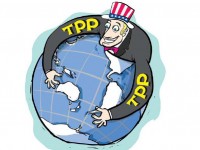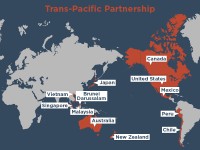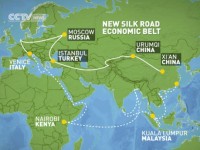
He Yafei, Former Vice Minister of Foreign Affairs
Oct 23, 2015
Because existing trade terms mean 80% of TPP members’ exports to the U.S. are already duty-free while even a bigger percentage of China’s manufactured goods enjoy that status, the agreement’s bottom-line impact on trade is negligible for now. The deal is more about who gets to write the long-term rules of global governance, which for China is both a challenge and an opportunity to reshape its economy in the direction it was going anyway.
Zhang Monan, Deputy Director of Institute of American and European Studies, CCIEE
Oct 22, 2015
Open to insiders and restrictive to outsiders, as they lower trade barriers among member economies, regional FTAs tend to build higher trade barriers against non-member economies. Often tools for working around loopholes in the WTO, such regional agreements buck the trend toward globalization.

Wu Sike, Member on Foreign Affairs Committee, CPPCC
Oct 14, 2015
For China and the United States, a new type of economic and trade relationship with each other is in the best interest of the two major powers, and they should work towards this end. That will require Washington to view the new TTP through the lens of its best economic interests, and join China in creating the world’s largest free-trade zone by around 2030.
Xenia Wickett, U.S. Project Director, Chatham House
Oct 14, 2015
It is hard to avoid the U.S.-China bipolar narrative, although this over-simplistic analysis misses other measures of global power and insecurity. Xenia Wicket argues there is no single paramount power, but a variety of nodes of state and non-state actors.

He Yafei, Former Vice Minister of Foreign Affairs
Oct 13, 2015
China’s “One Belt, One Road” initiative would create multiple economic corridors encompassing more than 60 countries Asia, North Africa and East Africa, linking the most dynamic East Asia Economic Zone with the advanced European Economic Zone. Intraregional free trade and infrastructure funding will enable more efficient circulation of currency and culture.
Oct 08, 2015
Supporters of the Trans-Pacific Partnership say the trade deal would help counter China’s influence over the Pacific, but that argument is flawed. China’s dominance is inevitable.
Han Liqun, Researcher, China Institutes of Contemporary International Relations
Sep 30, 2015
Whether or not the struggling talks produce an agreement soon, the US and China do not need to be defensive about the TPP. Instead, they should open an obstruction-free channel for dialogue, through which both countries can use anticipatory diplomacy to enhance mutual trust.
Dan Steinbock, Founder, Difference Group
Sep 24, 2015
Thanks to misguided stories about President Xi’s reforms, America risks losing the opportunity to participate appropriately in China’s massive economic rebalancing and reform drive.
Han Liqun, Researcher, China Institutes of Contemporary International Relations
Sep 01, 2015
Whether or not the struggling talks produce an agreement soon, the US and China do not need to be defensive about the TPP. Instead, they should open an obstruction-free channel for dialogue, through which both countries can use anticipatory diplomacy to enhance mutual trust.
Yin Chengde, Research Fellow, China Foundation for International Studies
Aug 12, 2015
Washington’s goals in the Trans-Pacific Partnership may have been economic at first, but the most recent negotiations suggest the trade agreement has become a tool of the US ‘pivot to Asia’. A symptom of its quest to contain China, it’s an unworthy goal for the US – and it’s doomed to fail.
Back to Top

- China-US Focus builds trust and understanding between the U.S. and China through open dialogue among thought leaders.
- Our Offerings
- Topics
- Videos
- Podcasts
- Columnists
- Research Reports
- Focus Digest
- Stay Connected
-
Thanks for signing up!
- Get the latest stories from China-US Focus weekly.